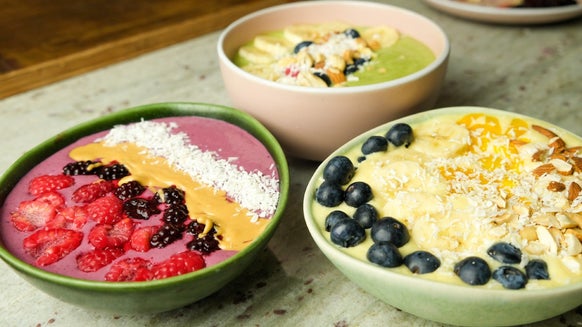Tabata vs HIIT | Which is Better for Weight Loss?

Exercise in general, and particularly HIIT exercise obviously uses a proportionate amount of caloric energy depending on the duration and intensity of your session. A Tabata or other forms of HIIT workouts increase the energy demands from your muscles, just like a regular workout, which allows you to benefit from heightened energy expenditure for the rest of the day as your muscles use the energy to recover. This can ultimately help to provide the physiological boost needed to help you achieve your fat loss goals.
What is HIIT?
HIIT, or high-intensity interval training, involves working very hard, often near maximal for a short set period before a short period of rest. An example maybe 45 seconds of work in each exercise, followed by 15 seconds of rest before executing another set. This type of workout typically does not last very long as it is unsustainable, however, one of the main objectives is to maintain a very high heart rate for the duration of the workout – which may only last for 20-30 minutes. HIIT training may also be defined with reps – i.e. complete 20 reps as fast as possible before moving on to the next exercise.

What is Tabata Training?
Tabata training consists of high-intensity interval training (HIIT) that comprises of bouts of 20 seconds of work with 10 seconds of rest. This is repeated 8 times to form a 4-minute intense cycle for one exercise. This is performed for 5 different exercises, totalling a complete workout in just 20-minutes. Of course, it is recommended that you still warm up appropriately so that you do not incur any injuries during your session.
How does Tabata Differ to HIIT?
Tabata is essentially a condensed version of HIIT. You still want to achieve and maintain a very high heart rate for the duration of the workout, but the working periods are typically shorter, and so is the workout. Both have similar physiological benefits, although the ones from a typical HIIT workout may be more pronounced simply due to the extended duration of the session.
The traditional Tabata Routine
A typical Tabata routine consists of 4-5 exercises, performed for 20 seconds each with a 10-second rest interval separating each exercise. This is completed 8 times to form a 4-minute workout. The exercises would usually focus on either upper, lower, or whole-body sessions, depending on the goals of the session and the individual. A 4-minute round is completed for each exercise to make up the full workout.
Example Workouts
HIIT Workout
- 10 Burpees
- 20 Russian Twists
- 10 Push-Ups
- 4x30m Sprint Complete 4 rounds in order.
Tabata Workout
Unlike HIIT which focus on completing a set amount of reps, Tabata workouts consist of performing a singular exercise for a round of 4-minutes with 20-seconds on and 10-seconds off (repeating 8-times to make 4-minutes).
- Squat jumps
- Push-ups
- Dumbbell row
- Broad Jumps
- Glute Bridges
What are the benefits?
The Benefits of HIIT
HIIT requires you to work for a prolonged period at a very high heart rate. Our hearts are built to work hard (sometimes), so this method of training is great for your cardiovascular health and disease prevention.
It increases your athletic abilities. While there are a lot of elements that go into making a good athlete, most people tend to train at one end of the spectrum. For instance, they may focus on resistance training to develop their strength or they may focus on running to improve their cardiovascular fitness. While there is nothing wrong with these, HIIT training uses exercises that utilize and thus train muscular power, which is a key element for many sports.
Tabata benefits
Like other variations of HIIT, Tabata workouts dramatically increase your heart rate for short periods of time. This can have fantastic positive effects on helping to ward off cardiovascular diseases, particularly if you work in a more sedentary role.
The nature of a Tabata workout stresses your anaerobic energy system and challenges your bodies capability of managing lactic acid build-up. This can ultimately lead to increases in local muscular endurance which can translate to other things (e.g. if you’re into running in your free time).
While you may think that 4-minutes is not enough to do much, it counts for a lot more than remaining sedentary throughout the entire day. If you can incorporate this style of exercise during busy days then you will massively increase your energy expenditure over longer periods of time, supporting fat loss. Each 4-minute round of a given exercise will also stimulate a hypertrophic response as well as getting your heart rate up high.
Precautions
What to look out for during Tabata and HIIT workouts
Form Breakdown:
Due to the intensity of these sessions, your technique can break down in favour of squeezing out a few extra reps – especially since you are often working with just your bodyweight. It’s important to maintain the correct technique for each exercise to minimise the risk of getting injured, which will take you out of the game for a while.
Over-exertion:
Over-exerting yourself can lead to other issues like fainting and in some rare cases, conditions like rhabdomyolysis – a condition where your muscles have been broken down too much due to excessive intense exercise. Most of us know our limits and how to take care of ourselves, so make sure you pay attention to how you are feeling throughout the workout.
Under-recovery:
Not getting enough sleep following a HIIT session is likely to mean that you won’t fully recover in time for the next session, meaning that you’ll carry some fatigue with you into the next session. This can then lead to form breakdown, which of course can then lead to injury.
Dehydration:
Intense exercise leads to a lot of sweating, which leads to a loss of fluids and electrolytes – both of which are vital in allowing your mind and muscle to operate at their full potential. Stay hydrated during your workouts to avoid excess fatigue and injury as a result of dehydration.
Tabata or HIIT |Which is better?
Both training methodologies are great for you and will stimulate similar physiological adaptations to some extent. It’s mainly down to preference as Tabata workouts are just a different form of HIIT training.
Due to their nature, both forms stimulate something called ‘excess post-exercise oxygen consumption’ – meaning that your muscles are still consuming excess oxygen (and energy) as they recover for up to 24 hours after the original workout (by which time, it’ll be time for another workout!). When paired with a balanced diet with an appropriate caloric intake, both methods will result in effective and efficient fat loss.
While both can be adapted, beginners to HIIT may wish to opt for Tabata style workouts, as they are typically slightly less intense and not quite as long in duration, allowing for a more appropriate training stimulus.
Take Home Message
HIIT training is a fantastic method of training to increase your aerobic capacity, increase muscle mass, athletic performance and alter your body composition. Individuals should consider their current level of fitness prior to choosing which they want to do (as a typical HIIT workout is not for the faint-hearted!), then you can reap the adaptations from these intense workouts!







